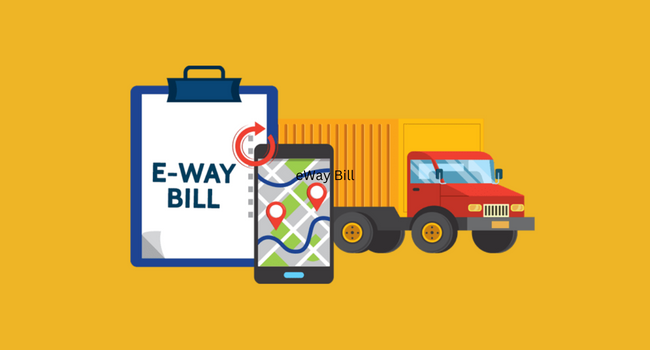Electronic Way bill, popularly abbreviated as eWay bill, is essentially used to transport goods from a consignee to a consignor. It contains important details regarding the consignment that you wish to transfer.
However, there are certain rules associated with this that you must know before proceeding with eWay bill registration.

Rules Regarding the Time of eWay Bill Generation
Furnishing the eWay bill is mandatory for every GST-registered person when there is a transfer of goods that costs more than Rs. 50,000. This transfer of goods can be intended for ‘supply’, any purpose other than ‘supply’, or inward ‘supply’ from an unregistered person.
Furthermore, ‘supply’ can be for various purposes, including the one that is made for business purposes and even those that are not. Additionally, it can also be intended for sale, transfer and exchange of goods.
However, at times eWay bill is also generated if the value of goods transferred is less than Rs. 50,000. This is applicable when there is an interstate transfer of goods or export of handicrafts by dealers who are exempted from GST registration.
Who Can Generate an eWay Bill
There following individuals can generate an eWay bill:
- Transporter: If the supplier has not issued an eWay bill, it becomes the responsibility of a transporter to generate it.
- Unregistered person: When an unregistered person is supplying goods across state borders, even if it is below Rs. 50,000.
- Registered person: If they are transporting goods of Rs. 50,000 or more to a registered or unregistered person.
However, there are several instances when individuals do not have to fill out an eWay bill for transporting goods.
When eWay Bill Is Not Required
You will not need to furnish an eWay bill under the following circumstances:
- If you are transporting the consignment on a non-motorised vehicle
- On transporting goods under the supervision of customs
- If you are transporting the goods from Inland Container Depot (ICD) to a customs port or from one customs port to another
- If you transport cargo to or from Nepal or Bhutan
- When you transport the goods from customs port to ICD
- When the Ministry of Defence imports or export goods
- If you transport empty cargo
- Consignor transporting goods within a distance of 20 km along with a delivery challan
You will have to fill out Form EWB 01 with accurate details to generate an eWay bill to transport your consignment.
How to Fill an eWay Bill Correctly
The eWay bill usually consists of two parts:
1. Part A of Form EWB 01:
This part of the Form includes details of the goods and other essential details like
- GSTIN of the recipient
- Value of goods
- Transport document number
- Invoice number
- Reason for transportation,
- Delivery location
- HSN code
2. Part B of Form EWB 01D
This part of the Form includes only the details of the vehicles in which the suppliers transport the goods.
Different individuals fill various parts of Form EWB 01 for transportation of consignment. This is as follows:
| Who Needs to Fill Respective Parts | Part of Form GST EWB 01 |
| A registered individual under GST | Part A |
| Registered consignor or consignee | Part B |
| Transporter through transportation by road | Part A |
| Registered person hands over the goods to a transporter | Part B |
| An unregistered person under GST | Part A or Part B |
There were some modifications introduced in these eWay bill rules during the 26th GST council meeting.
Modifications Made in eWay Bill Rules
Government introduces the following modifications in the eWay bill rules:
- You will not have to generate an eWay bill if the value of a consignment is less than Rs. 50,000.
- There is no need to furnish this bill if you are transporting the goods within 50 km inside a state or Union Territory.
- This bill will remain valid for one day for goods conveyance up to 20 km and an additional one day for every other 20 km.
- The officials can accept or reject the bill either within 72 hours or before the time of goods delivery.
Keeping these rules and their modifications in mind, you can check out the steps of eWay bill registration.
Steps to Register for eWay Bill
You can follow the steps below to register for an eWay bill:
- Step 1: Visit the official website of ewaybillgst.gov.in
- Step 2: Click on the ‘Registration’ tab
- Step 3: Select ‘e-Way Bill Registration’ from the dropdown list
- Step 4: Enter the GSTIN and CAPTCHA code.
- Step 5: Click ‘Go’
- Step 6: Enter your mobile number and generate an OTP to verify the same.
- Step 7: Create a user ID and password and enter all the essential details to register for the eWay bill.
You must ensure the accuracy of the data that you are entering during eWay bill registration process. Otherwise, on verification, if the officials find them incorrect, then they can reject your bill generation request.
